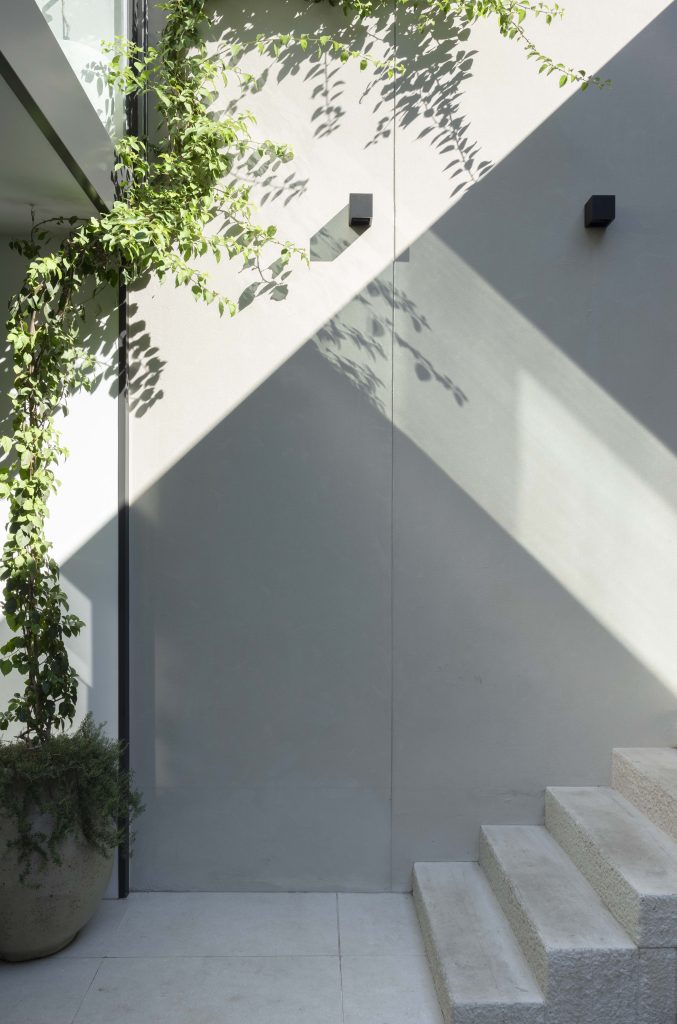When new clients approach us about designing courtyard gardens, one phrase often surfaces: “It’s only a small garden. It may be too small or simple for you.” No space is too small to create beauty, functionality, and harmony. In fact, working with small gardens is one of the most rewarding challenges for a designer.
Small spaces demand precision. Every plant choice, pot placement, and structural detail carries significant weight because, in a courtyard, even the smallest decisions are amplified. The limited space forces us to focus on the essentials, ensuring that every detail serves a purpose while also contributing to the overall aesthetic.
Plant Choices Matter
In a courtyard garden, plants are more than decorative elements – they define the space. Choosing the right plants involves considering their growth habits, colours, and textures. Vertical growers, like Star Jasmine or Herald’s Trumpet, are ideal for maximising wall space. Compact shrubs or dwarf varieties of plants can bring greenery without overwhelming the space. Seasonal flowers can add pops of colour that change throughout the year, keeping the garden dynamic and engaging.
Consider how plants will interact with light. Many courtyards have shaded corners, perfect for ferns, native Violets or shade-loving grasses. Conversely, a sunny courtyard may call for succulents or Mediterranean herbs. Every plant choice is an opportunity to build layers of interest within a small framework.

Pots as Functional Sculptures
Pots are often the unsung heroes of courtyard gardens. The right pots can act as sculptural focal points while also providing mobility and flexibility in design. For example, a cluster of terracotta pots of varying heights can add a rustic charm, while sleek, modern planters bring contemporary elegance.
The material and colour of the pots should complement the surrounding architecture and garden theme. Lightweight materials like fiberglass can be used for easy rearrangement, while stone or concrete pots create a sense of permanence and stability. Additionally, well-placed pots can help break up rigid lines and soften hardscapes, creating a more inviting and natural feel.
Ensure the scale of the pot is right for the plant. For small courtyards, one big pot with lots of plants is often a smarter choice than many little ones.
Structural Details Create a Sense of Place
In a small courtyard, structural details like paving, seating, and water features can make or break the space. The layout of pathways and hardscaping needs to guide the eye and create flow. For instance, herringbone brickwork or mosaic tiles can add subtle patterns that enhance visual interest without overwhelming the space.
Seating is another critical element. A small built-in bench can transform a courtyard into a usable outdoor retreat. Materials like timber or concrete can echo the garden’s overall style, while cushions can add warmth and comfort.
The Beauty of Intimacy
One of the greatest advantages of courtyard gardens is their inherent intimacy. Unlike sprawling landscapes, courtyards offer an immediate sense of enclosure and comfort. By getting the scale right, you can enhance this intimacy, making even the smallest garden feel lush, inviting, and personal.
In the end, designing a courtyard garden isn’t about how much space you have – it’s about how you use it. Every detail, from the plants to the pots to the structural features, contributes to the overall story of the garden. With thoughtful planning and a focus on scale, even the simplest courtyard can become an idyllic retreat.